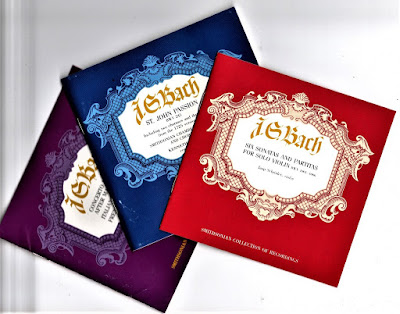It is hard to overestimate the effect Johann Sebastian Bach had on the shaping of so-called "classical music," though in his lifetime (1685-1750) he was known as a master on the harpsichord and organ and as a builder of the latter. As a composer, however, he was all but unknown, a status that, remarkably, did not change until the onset of the nineteenth century, even as he was acknowledged by such masters as Haydn, Mozart and Beethoven to have had a profound influence on their development. The other pervasive legacy left by Bach is equal temperament as best laid out in his The Well-Tempered Clavier works for keyboard. Even though his tuning system is not reflective of the natural harmonics generated by the vibrations of strings, the tempered scales became and remain standardized and allow for considerable freedom in transposing keys on an instrument like the piano which has a fixed pitch orientation, despite attempts by some, including the remarkable Harry Partch, to convince the world otherwise.
This five-disc set, the second volume, issued as the "Smithsonian Collection of Recordings" provides a taste of the remarkable diversity of Bach's composing during the first half of the 18th century. The solemn, stately, dramatic and highly affecting "St. John Passion" concerning John's version of the crucifixion of Christ, was written in the 1720s and are performed, either on period instruments or modern ones modeled after them, by the Smithsonian Chamber Players and Chorus, recorded in the Renwick art gallery at the Smithsonian in March 1989. A beautifully and richly composed set of three sonatas and three partitas for violin were composed just prior to the "St. John Passion" and was performed by Jaap Schröder in the Oltingen, Switzerland church in the mid-80s. Lastly, there are two concertos and an overture on harpsichord, where the counterpoint comes across more strongly than on a fortepiano, which did not displace the former in superiority until later, recorded by James Weaver on a contemporary instrument based on a 1730s harpsichord, exactly 33 years ago at the National Museum of American History. These are excellent recordings reflective of the diversity of a towering seminal figure in European music and, with a new lockdown in place here, this music provides some relief from renewed restrictions.

No comments:
Post a Comment